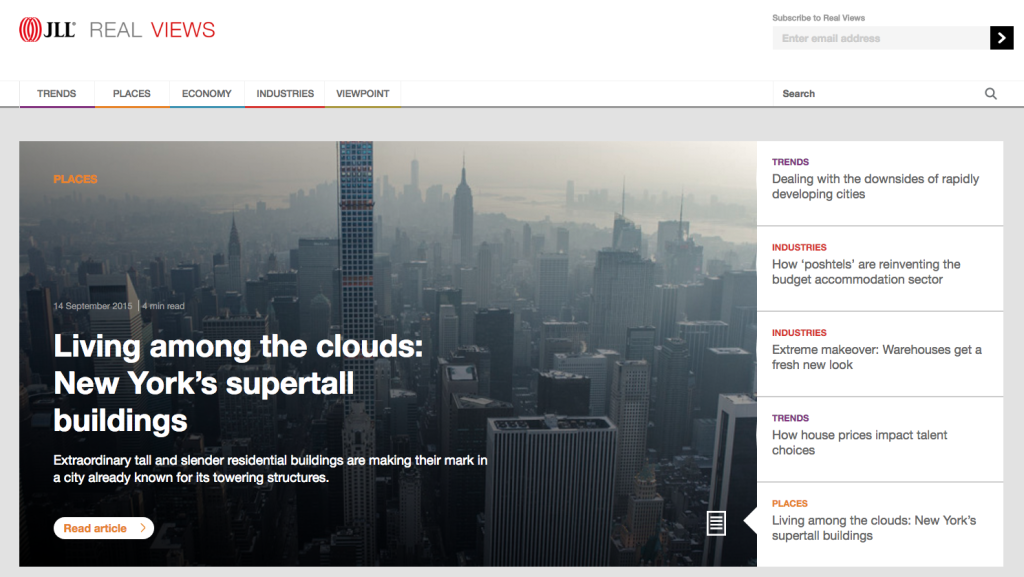
Website Design
How to Build a Great Commercial Real Estate Website
Table Of Contents
- 1. Lay The Branding Foundation
- 2. Identify Your Target Audience
- 3. Implement Functionality and UX Best Practices
- 4. Invest In Professional Photography
- 5. Consider Investing In Virtual Tours
- 6. Focus on Writing Quality Property Descriptions
- 7. Leverage Downloadable Floor Plans
- 8. Highlight Key Amenities Information
- 9. Feature Broker Contact Information & Headshots
- 10. Add Existing Building Certifications
- 11. Plan out Your Promotional Strategy
- 12. Use Tools to Measure Results
- Getting started with a commercial real estate website
You want to stand out from the competition. That means that as a commercial real estate (CRE) owner or broker, you need to build a marketing foundation that extends beyond mere flyers, brochures, and LoopNet listings.
Specifically, you need a well-designed website for your commercial real estate business. This tool is a non-negotiable essential when it comes to conveying credibility in your brand and your properties.
First impressions are 94% design-related, and nearly half of consumers make a decision about your credibility based on your website’s visual appeal.
Creating a great CRE website isn’t just about making a good first impression and looking credible, though. It can directly impact your revenue, too. Studies show that great design drives an 18% to 41% higher willingness to pay more. Plus, individuals with a positive perception of your company’s design have roughly 10% better net retention.
Good website design also affects your search engine optimization (SEO), which directly impacts the likelihood of someone discovering your commercial real estate business online.
How do I build a commercial real estate website?
Below are 12 things to consider if you want to build an effective CRE website.
1. Lay The Branding Foundation
You need your CRE company to look legitimate. That means having consistent branding, which essentially means you’re using the same logo, colors, and typography on your corporate website and your individual property websites.
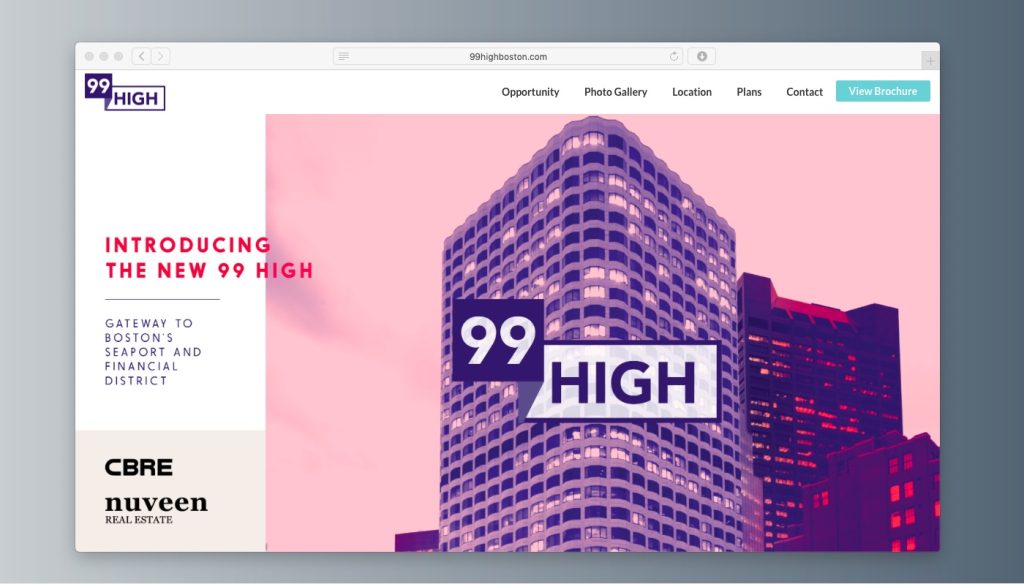
To start, have various sizes of your logo handy. Make sure your website prominently features your own logo, and include any relevant property logos on individual commercial real estate websites.
Then, identify which colors and typographies you’ll be using. Pull any boilerplate content you want to go on your website, too, like a company description.
For property websites acquire a branded URL. Whenever possible, make sure the name of your building or its address are included in the domain name. This helps with exact match searches in Google, and can amplify your local search result standings.
2. Identify Your Target Audience
What audience do you want to target? Keeping your audience in mind will help you tailor your content to pique their interest.
For example, if you’re gearing your site toward brokers, you can — and probably should — heavily use real estate jargon. But if you’re targeting business owners who may want to lease your space, you’ll probably want to write your property descriptions in more conversational, accessible language.
3. Implement Functionality and UX Best Practices
Expectations have evolved in the last few years to where people won’t put up with poor design, frustrating navigation, or inconsistent layouts. If it’s hard to find what they need, they’ll leave and go to another site.
Commercial real estate website templates can provide a solution to that with structured information, cutting edge design and an excellent user experience.
You also need to think about your site’s functionality: how people find it and how they use it once they do. Key areas to think about here include:
- Your site’s navigation (i.e., menus, footer links) – Every section of your website should be accessible with no more than three clicks whenever possible.
- Responsive design (i.e., your site’s ability to display and work well on everything from desktop computers to smartphones) – Your website should load seamlessly on all screen sizes and include mobile-phone and tablet-friendly navigation. No pinch-zooming should be required to view your information.
- User experience (i.e., UX) – Is your site nice to look at and easy to use? Think through how the average user will engage with your site and experience your brand through it.
- Browser compatibility – Your website should work smoothly on all browser versions you can reasonably expect your prospects to use. That means a spectrum of browsers going back 5-7 years.
- SEO – You also want people to be able to find your website, so you need to optimize it for search engines. A huge part of this is an optimized page title and meta description. Your page title should be no more than 60 characters, while the meta description should be 150 characters or shorter. Write both in easy-to-read language, and make sure you include the property address for any individual listing pages.
4. Invest In Professional Photography
The most straightforward way to advertise properties is with photography. Having a striking selection of professional images on a real-estate listing is pretty fundamental.
Your main image should be bold, high-res and attention-grabbing (on mobile & desktop).
Don’t trip over by using headline images that don’t show off the space at its absolute best. However, remember that large images can slow down website pages.
Example:
Spend some time searching and viewing local buildings in your market to see how they present themselves.
The Park Avenue Tower is a prime example of property photography that accurately captures the look and feel of the building while highlighting particularly engaging elements of the space:
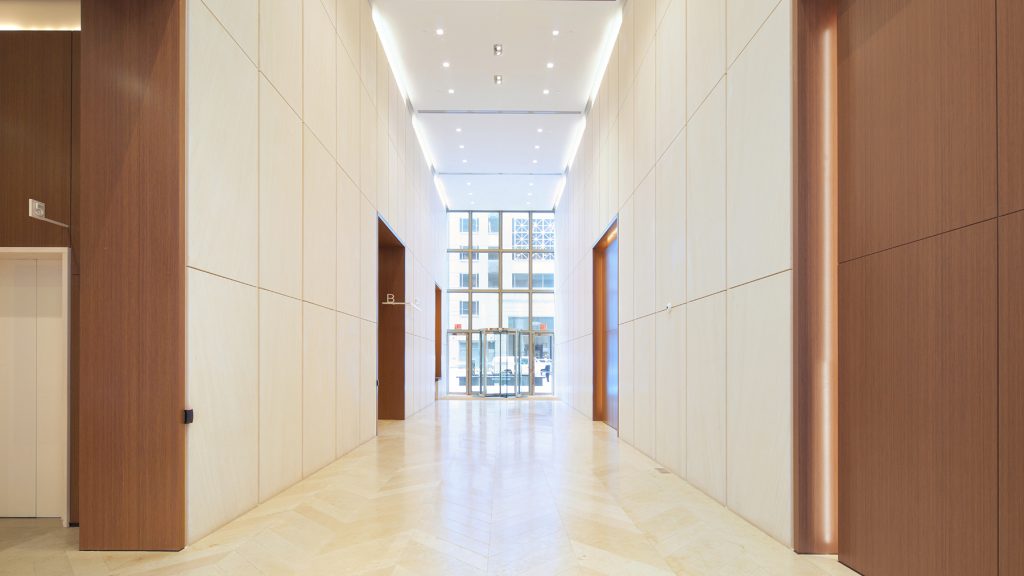
5. Consider Investing In Virtual Tours
Today, tenants and investors might not be able to visit a property in person, but they still find images ineffective at fully projecting the nuances of the space. To bridge the gap, they want virtual tours. 3D virtual tours are becoming more prevalent to help aid during the sell/lease decision-making process for commercial properties.
Matterport, and Floored have developed into viable and accessible commercial real estate virtual tours solutions. The potential for virtual tours as a resource for CRE companies only grew with the increasing adoption of VR technology as well.
What’s more, the potential for virtual tours to serve as a valuable resource for CRE companies only grew with the increasing adoption of VR technology. Virtual reality walkthroughs on headsets like the Oculus Rift, or even a Samsung Galaxy phone, will expand your ability to engage with remote customers, showcasing properties to a much wider audience.
Examples:
Check out this virtual walkthrough of the space.
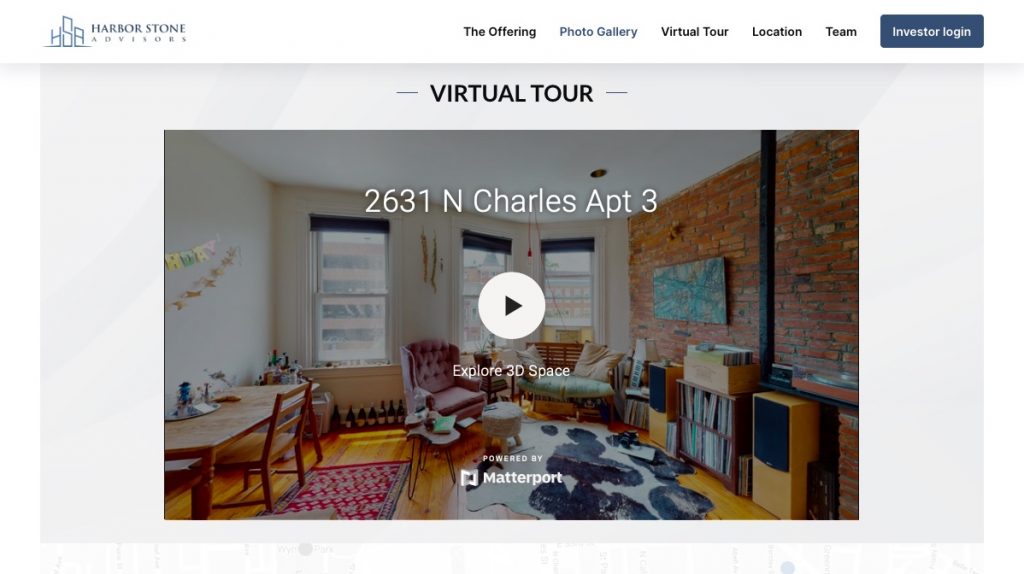
6. Focus on Writing Quality Property Descriptions
New technologies, like virtual tours, are promising but it’d be naïve to overlook the impact of the humble property description, which is still what the majority of people examine (alongside images) when deciding whether to enquire or not.
But it’s not necessarily new vs. old. In fact, why not combine great descriptions, and great images, tours, SEO, floor plans, and all the other emerging stuff that’s also in this post. You’d then have a great commercial real estate website.
Tips:
To write a great real estate property description…
- Stick to 150 words; brevity is beautiful!
- Spell out who the property is for, and what the key selling-points are
- Write clearly; avoid jargon and real-estate cliché
Example:
The website for 101 California in San Francisco does a perfect job of providing key information in a short and clear description, highlighting key statistics without over explaining. It’s short, succinct, and heavily visual.
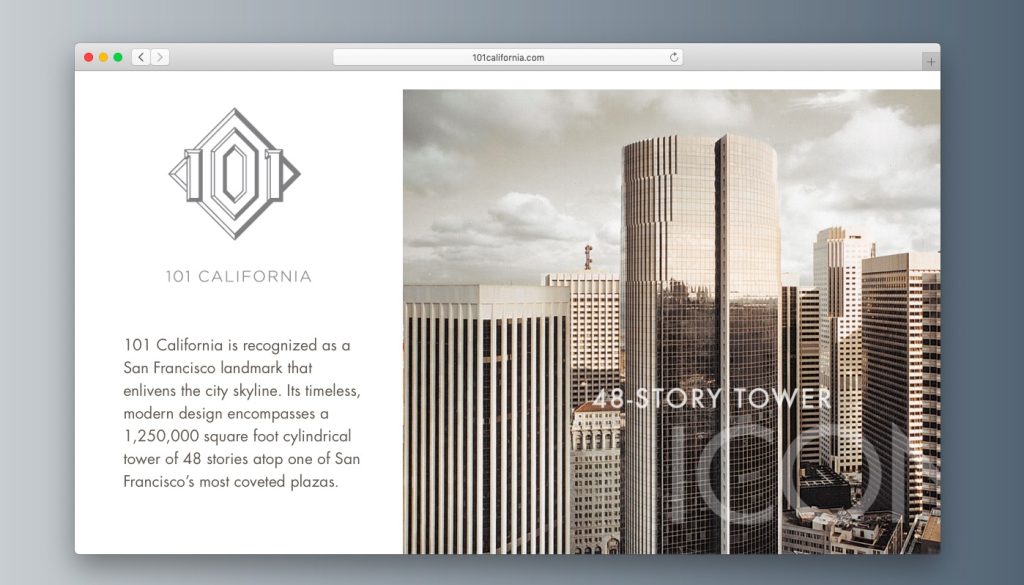
7. Leverage Downloadable Floor Plans
A floor plan helps potential tenants to get to know your property’s layout a little better, and then keep it in mind. While often overlooked, floor plans do a pretty good job of piquing the interest of future clients.
It’s recommended to include a PDF of every floor plan that is available in the building so website visitors can download it and envision how that property would work for them.
How you draft them is up to you but technologies like Google’s MapsIndoors allow floor plans to be created at no extra cost – and they can then be made easily accessible online.
Example:
Downloadable floor plans are a key feature of SharpLaunch.
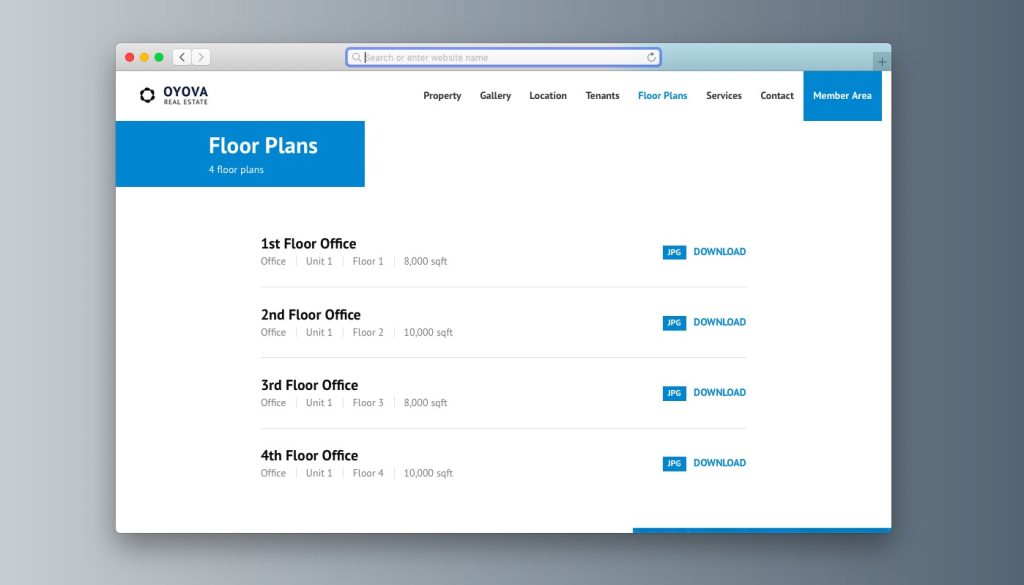
8. Highlight Key Amenities Information
Location is arguably the most important factor in real estate, so why explain an area in a few hundred words when you can do the same intuitively with a commercial real estate map?
It’s not just the physical location of a commercial real estate property that’s important, but also the amenities nearby: bars, restaurants, banks, transport links, and other services. Even better if you can pick those out, too.
There are a few ways to implement maps on a website. Embedding Google Maps using iFrames (i.e., inline frames) is a basic option, but you’ll have to do some technical tweaks to customize your map so that it’s branded and contains the extra pins and information on the surroundings. Fortunately, our interactive real estate maps make this easy for you.
Example:
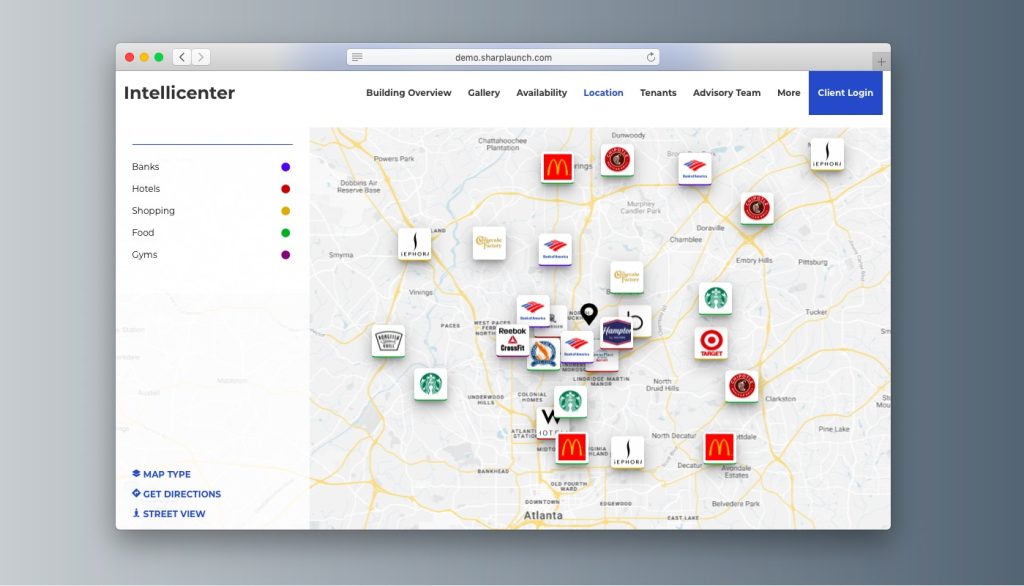
9. Feature Broker Contact Information & Headshots
People are central to today’s social web. If you don’t show the faces behind your organization it can almost look suspicious.
On the other hand, if you emphasize the human side to your commercial real estate company, it’s an attractive point for prospects who want to get in touch.
At the very least, your website should include information about who to contact for your listings. List out broker names, phone numbers, and email addresses. Consider adding their headshots, too.
There are practical benefits to using social technologies that allow easier online communication, like instant ‘chat with us now’ widgets. If you help customers to get the information they need right away, it’ll reduce the chance that they’ll bounce off your page and onto a competitor’s nice, human-looking website.
Example:
The Bank of America Tower property website is a prime example of how to present your brokerage team in a clean, succinct way. Each broker is featured with a headshot and contact information, allowing for a profile of the brokerage and accessibility to the key stakeholders.
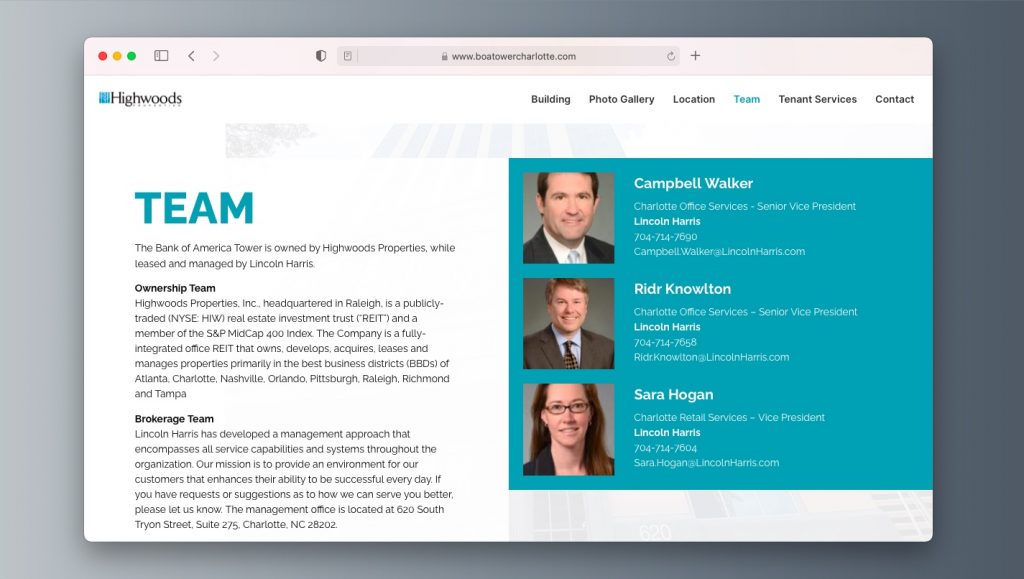
10. Add Existing Building Certifications
Third party green building certifications are a great way to build credibility and showcase your firm’s focus on sustainability to prospective tenants and investors.
Adding a badge to your property website is the easiest way to market your achievements and highlight the building’s unique green features.
Make sure you get all the assets in place and add them to the designated area on the website.
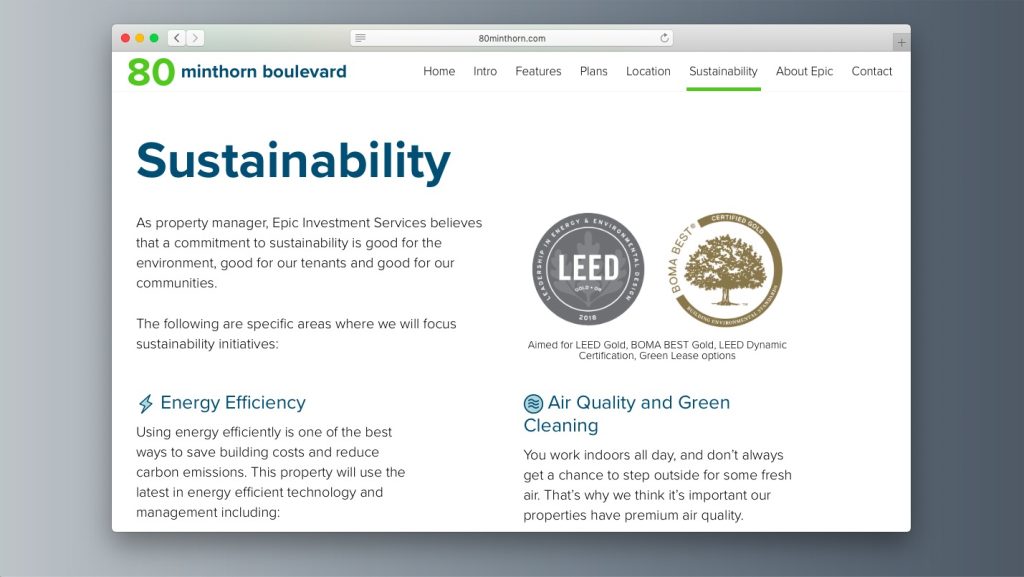
11. Plan out Your Promotional Strategy
Your website delivers much more value if you have a digital content strategy. To draw new traffic to your site, leverage SEO and the existing network of real estate sites. You might post links to your site on CRE listing sites, press releases, news articles and blogs, for example.
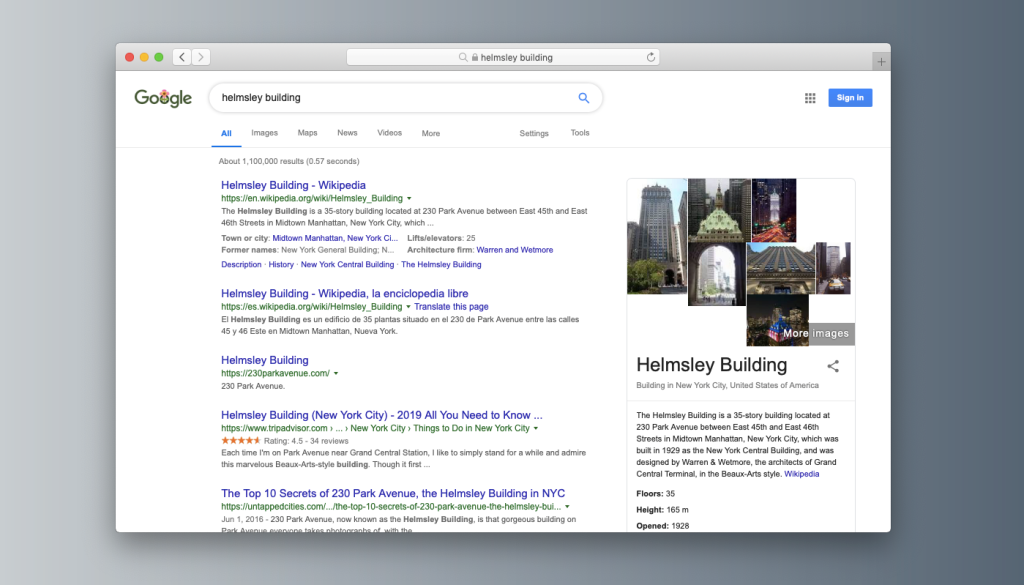
You can also consider posting links to your commercial real estate website to your LinkedIn and other social media pages. You might additionally want to get in a routine of publishing regular blog posts on your website to boost your search engine ranking and establish your company as an industry thought leader to raise awareness within your audience.
It’s not a quick fix but the benefits are long-term:
- Great content attracts links, shares and coverage – all of which can push up search rankings, attract relevant traffic, and raise brand awareness.
- Thought leadership, through content, is a great way to demonstrate brand values and show customers that your commercial real estate company stands for what you say it does.
- If you understand how prospective customers use your site – and their personas / psychology – then you can begin to shape content that also leads to conversions.
A nod goes back to the previous point in this piece; analytics is integral to a blog and content strategy. It helps to shape the ongoing plan, as you see what’s working (or not) and how users interact with your key topics and themes.
Example:
JLL’s Real Views is a real estate news hub focusing on analysis, opinion, and research from JLL about the real estate sector and larger business community. This industry-specific focus, combined with relevant expertise in key verticals, allows them to rank for several important terms in their industry and drive references from other sites.
12. Use Tools to Measure Results
If you measure and analyze your website’s traffic, you can see where you might need to improve. You might notice that a lot of people leave your website when reaching one specific page, for example. Then, you can improve that page.
To get these kind of insights, set up Google Analytics. It’s free, easy to use, and the most popular analytics platform. Start with traffic totals. Then, get a bit more detailed with the number of leads from exact sources or listings.
You might also want to look at flow visualizations of website sessions to get a feel for how people are using your commercial real estate website.
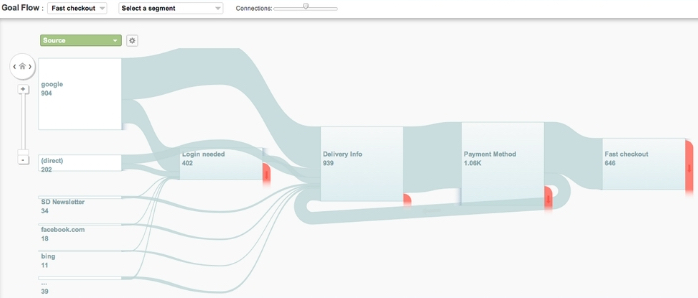
Google’s platform isn’t the only option but you should at least have your website backed by analytics of some kind if you’re not using it.
Another handy way to use marketing analytics is to understand your best performing content to refine your content strategy as you go along (see next point).
Example:
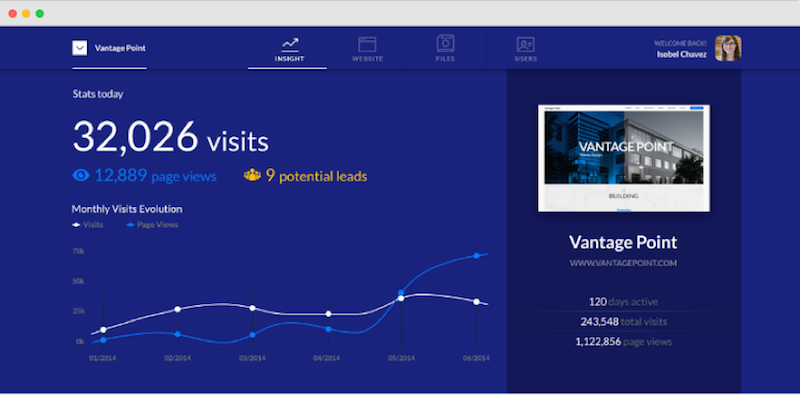
Getting started with a commercial real estate website
So, where do you get started when building a commercial real estate website?
You can hire a web design agency to build a custom website with plenty of bells and whistles, but you should consider the cost and time associated with this kind of project. Not only does this web development route come with a hefty upfront fee, but it also limits your ability to make changes to your CRE website. When you hire a web design agency, you’ll usually need to pay for each adjustment you want to make, including adding and removing properties as their availability changes.
Fortunately, that’s not your only option. You can use a commercial real estate marketing software that includes a website builder to make the whole process more streamlined and cost-effective, both at launch and from that point forward.
![]()
CRE Website Design
Build a stunning commercial real estate website with an easy-to-use website creator. No code required.
Explore MoreRelated Blog Posts
Company updates
Announcing our New Flyer Design Tool
Say goodbye to the hassle of hiring a designer or struggling with complex design tools...
Marketing Best Practices
9 Essential Deal Room Features Every CRE Professional Needs
Virtual deal rooms have revolutionized how commercial real estate professionals manage...
Marketing Best Practices
6 Key Attributes to Define Your Ideal Customer Profile in Commercial Real Estate
In commercial real estate, success isn’t just about finding customers—it’s about finding the...


